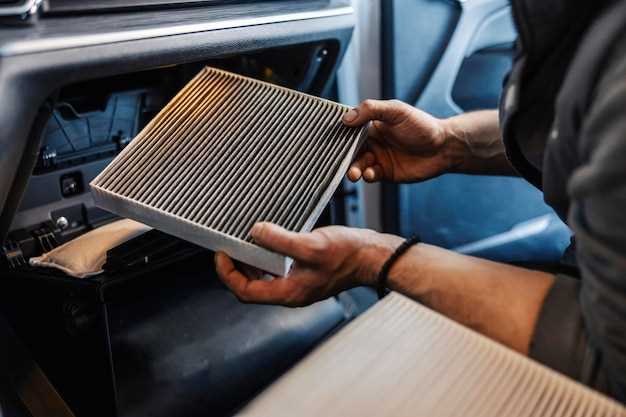

Preparing your engine bay for a show involves meticulous detailing and attention to the finer details that make your vehicle stand out. A clean and well-maintained engine bay not only enhances the overall aesthetic appeal of your car but also showcases your dedication as a car enthusiast. Here, we provide essential tips to ensure your engine compartment is always ready to impress.
The first step in the prep process is to start with a thorough cleaning. Accumulated dirt, grease, and grime can detract from the visual impact of your engine bay. Use appropriate cleaners and tools to carefully remove any debris, paying close attention to hard-to-reach areas. A spotless engine bay lays the foundation for effective detailing and highlights the impressive features of your machinery.
Once cleaned, the next phase involves applying protective products that leave your engine bay looking shiny and new. Detailing your engine not only enhances its appearance but also protects it from future buildup and deterioration. Use dressings designed for engines to restore luster and maintain a show-ready condition.
Choosing the Right Cleaning Products for Engine Detailing

Proper engine detailing requires careful prep to ensure you choose the right cleaning products. Selecting suitable solutions can significantly impact the appearance and longevity of your engine components.
Start by considering engine degreasers, specifically formulated to break down oil, grease, and dirt. Look for biodegradable options that are safe for various surfaces and won’t harm rubber or plastic components. A good degreaser will effectively eliminate stubborn grime without damaging sensitive parts.
Next, consider using a dedicated cleaning product for metal surfaces. Many engines feature aluminum and other metals that can tarnish over time. A metal cleaner formulated to restore shine and protect against corrosion should be included in your detailing toolkit.
Don’t forget about protective sprays. After cleaning, applying a light coating of silicone spray or a protectant can enhance the look of your engine while shielding it from future dirt build-up. These products help maintain a clean appearance and make future detailing sessions easier.
Lastly, ensure you have appropriate brushes and microfiber cloths to apply and remove cleaning solutions effectively. These tools are essential for reaching intricate areas and ensuring a thorough cleaning job during your detailing process.
Step-by-Step Guide to Engine Bay Cleaning

Cleaning your engine bay is an essential part of detailing your vehicle, ensuring that it not only looks good but also runs more efficiently. Follow these steps for a thorough engine cleaning prep.
Step 1: Gather Your Supplies
Before starting, collect all necessary materials. You will need a vacuum cleaner, soft brushes, microfiber cloths, degreaser, plastic bags, and a garden hose or pressure washer. Ensure all products are safe for automotive use.
Step 2: Safety First
Disconnect the battery by removing the negative terminal. This prevents any electrical issues during the cleaning process. Additionally, cover sensitive components such as the air intake and exposed wiring with plastic bags to protect them from water and chemicals.
Step 3: Dust and Vacuum
Begin by using a vacuum cleaner to remove loose debris, dust, and dirt from the engine bay. Pay special attention to nooks and crannies where dirt accumulates. Following this, use a soft brush to clean any stubborn spots.
Step 4: Apply Degreaser
Spray an appropriate degreaser on all surfaces, focusing on heavily soiled areas. Allow it to sit for a few minutes to break down grime. Be cautious with painted surfaces and plastic to avoid damage.
Step 5: Scrub and Rinse
Using a soft-bristled brush, scrub the engine bay gently, ensuring to reach all areas. After scrubbing, rinse off the degreaser using a garden hose or pressure washer on a low setting. Avoid getting water into electrical components.
Step 6: Dry Thoroughly
Wipe down all surfaces with a microfiber cloth to remove any remaining moisture. Ensure everything is completely dry to prevent rust and corrosion.
Step 7: Final Touches
Once dry, remove plastic covers from sensitive areas. If desired, apply a plastic and rubber conditioner to give surfaces a fresh look. Reconnect the battery, and your engine bay is now ready to impress!
Maintenance Practices to Keep Your Engine Bay Looking Pristine
To maintain an immaculate engine bay that’s always ready for a show, consistent detailing practices are essential. Begin with a thorough prep routine before any cleaning. Ensure the engine is cool to prevent damage and avoid burns. Disconnect the battery to protect electronic components during the detailing process.
Start by removing loose debris such as leaves and dirt using compressed air or a soft brush. This step is crucial as it helps avoid scratches while cleaning. Once the surface is clear, apply a degreaser suitable for automotive use. Allow it to dwell for a few minutes to break down grease and grime effectively.
For detailed cleaning, use a soft cloth or sponge with warm water to wipe down all accessible surfaces. Focus on areas that tend to accumulate dirt, such as around the battery, hoses, and metal components. Rinse thoroughly but avoid excessive water exposure, especially near sensitive electronic parts.
After rinsing, dry the engine bay completely with a microfiber towel to prevent water spots and corrosion. To enhance shine, apply a non-silicone dressing on plastic and rubber parts. This not only improves appearance but also provides protection against UV damage.
Regular inspections are vital. Check for leaks, wear, and any signs of corrosion. Addressing these issues promptly keeps your engine bay in optimal condition. Regular maintenance will ensure that your engine bay not only looks pristine but is also ready to impress at any upcoming show.






